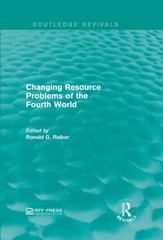Question
Consider a setting where two gas stations, Station A and Station B, compete to sell (undifferentiated) gasoline in a small town. Each station has a
Consider a setting where two gas stations, Station A and Station B, compete to sell (undifferentiated) gasoline in a small town. Each station has a marginal cost of $2.00 per gallon, and the daily inverse-demand curve for gasoline isP(quote)=8qtot/500, whereqtot=qA+qB.The price is in dollars per gallon, and quantity is in gallons of gas.
In Cournot competition, the best-response functions for these stations are
qA(qB)=1,500qB/2,
qB(qA)=1,500qA/2.
Are each of the following statements true or false?
1.In the Cournot equilibrium, both stations sell 1,000 gallons of gas per day.
2.In the Cournot equilibrium, both stations make a profit of $1,500 per day.
3.IfStationA can enter as a "Leader" and choose before Station B choosesas in the Leader-Follower gamethen the total quantity sold will be higher than in the Cournot equilibrium.
4.In the Leader-Follower equilibrium where Station A enters first and Station B follows, consumer surplus is higher than in the Cournot equilibrium.
5. Suppose the town council creates a license that allows a station to enter first, acting as Leader in the Leader-Follower game.It plans to offer the license to Station A for some price, but if Station A turns down the offer, then the town council will make the same offer to Station B. If neither station buys the license, then both stations enter the market simultaneously and end up in the Cournot equilibrium.If the license price is $1,000 (per day, in perpetuity), then Station A will purchase the license.
Step by Step Solution
There are 3 Steps involved in it
Step: 1

Get Instant Access to Expert-Tailored Solutions
See step-by-step solutions with expert insights and AI powered tools for academic success
Step: 2

Step: 3

Ace Your Homework with AI
Get the answers you need in no time with our AI-driven, step-by-step assistance
Get Started


